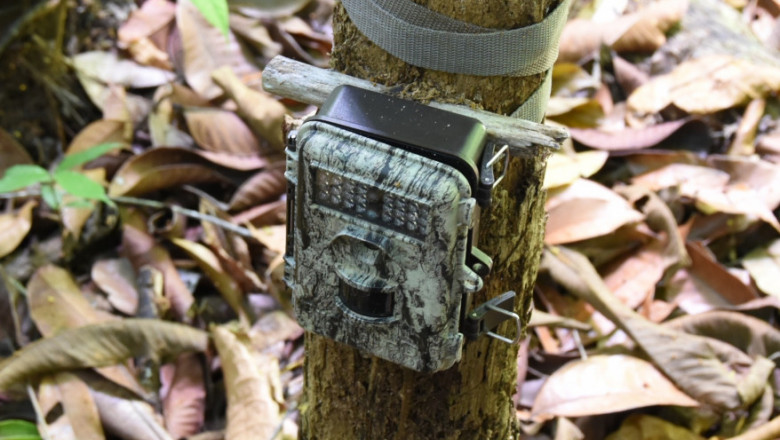Across the Osa Peninsula, in the Southwestern corner of Costa Rica, Osa Conservation works to protect and conserve nature while allowing for human-wildlife coexistence. The science-driven nonprofit organization studies and monitors wildlife conservation progress by remotely capturing wildlife – on camera. Eleanor Flatt, an Osa Conservation wildlife biologist responsible for managing the organization’s wildlife monitoring conservation efforts, provided an overview of how Osa Conservation uses camera trapping to propel its conservation work.
Unlike other conservation biology research methods that employ “catch and recapture” techniques and require human involvement (bird banding, for example), camera trapping automatically “captures” photos or video of wildlife without direct human interaction and with minimal or no effect on wildlife behavior. Motion-activated trail cameras can be mounted in forests on tree trunks or in tree canopies and then automatically operate 24 hours per day, capturing imagery of all animals that pass, even at night.
The traditional alternative to camera trapping is walking along a transect of a landscape, looking for wildlife, their footprints, and other evidence of their presence. These transect walks take hours to complete, and researchers can still miss some elusive or nocturnal species.
According to Flatt, the initial use of camera traps was “mainly to identify wildlife for hunting in North America, and then conservationists and researchers adopted the camera trap and turned it into this monitoring tool that has really advanced wildlife monitoring.” Scientists can set up camera traps to capture photos or videos of animals, although the Osa Conservation scientists prefer videos to gain insight into animal behavior.
Click here to see a jaguar check out a camera trap at night.
(Video courtesy of Osa Conservation)
Researchers can run the camera trap imagery data through software platforms like Wildlife Insights that use artificial intelligence to sort different species and activities into different categories, which is particularly useful for long-term monitoring. Camera traps can also be paired to identify individual jaguars, which are identifiable by their spot patterns. Camera trapping technology has significantly advanced wildlife monitoring, and the more reliable data and quicker data collection improve conservation decisions and outcomes.
When arranged in a grid, camera traps allow researchers to better understand the distribution, movement, or population size of a species or community. Flatt explained the grid “spacing is based on home ranges of different species.” When Flatt and her team set up their Osa Camera Trap Network in 2018, they placed over 200 paired camera traps every four kilometers to help determine the population and distribution of jaguars across the Osa Peninsula.
Compared to data from the 1980s, the results of this biodiversity survey showed that multiple species which originally confined themselves to the safety of the pristine Corcovado National Park are now more widely distributed across the peninsula. Flatt described the study as a hidden conservation success story; Without the camera trap grid, the researchers would not have known that certain species on the brink of extinction are now much more abundant and widespread.
Camera trapping can also be an effective communication and outreach tool. Osa Conservation shares the visual data from the trail cameras with the owners of the land where the cameras are placed. Flatt recalled how proud even skeptical landowners become when they learn that jaguars and other wildlife use their land. “Camera traps as a tool can definitely connect people to nature more, and they see it in a different light.”
With Osa Conservation’s work as an adaptable model, camera trapping could become a powerful research tool and conservation mechanism in various other parts of neotropical Latin America.
––
Author's note: Special thanks to Eleanor Flatt for the interview. As Osa Conservation’s wildlife conservation and technology manager, she is responsible for managing the organization’s wildlife monitoring conservation and technology trial projects.

